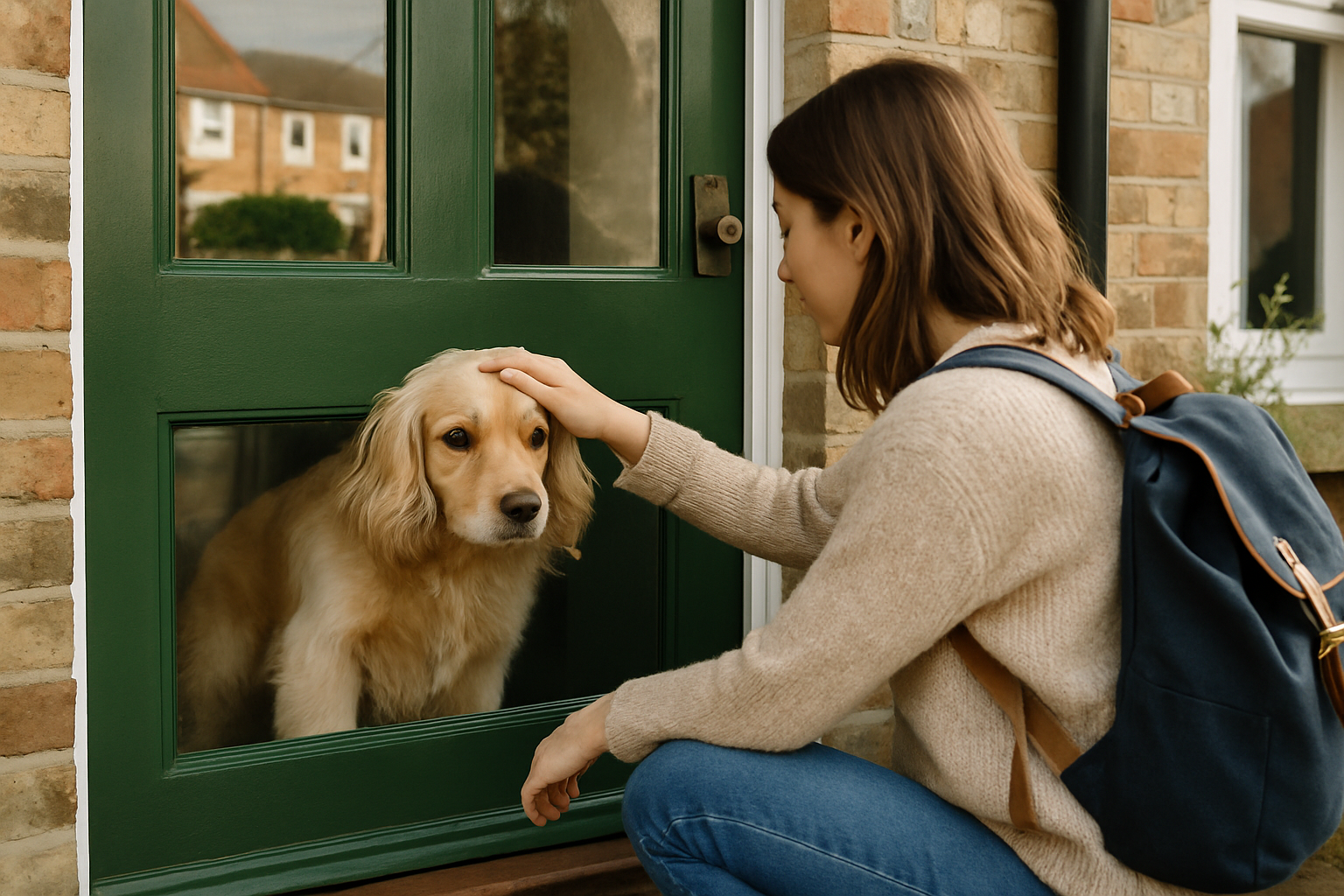Your basket is currently empty!

Calming Dog Separation Anxiety: Essential Survival Guide
When dog separation anxiety hits, it can feel daunting, but you are not alone. Many loving UK homes see this challenge, and with patient, kind steps you can help your dog relax and learn that time on their own is safe. At PawsGuide, we focus on confidence, comfort, and clear routines that make a real difference 🐶.
What Separation Worries Look Like
Every dog is different, yet common signs include pacing, whining, barking, chewing doors or skirting boards, toileting indoors, or drooling once you leave. Some dogs shadow you from room to room before you go, others refuse food when alone. If your dog shows any of these, remember it is fear, not naughtiness. Punishment will only increase anxiety and slow progress.
Build Calm Foundations
Start with a relaxed routine. Keep goodbyes and hellos low key, a friendly nod and a calm stroke rather than a big fuss. Create a cosy rest spot with a comfy bed, your scent on a T-shirt, and a safe chew. Short, predictable walks, gentle play, and regular toilet breaks set your dog up to rest. Many dogs settle best after a sniffy walk, so include that where you can.
Step-by-Step Alone-Time Training
Think like a staircase, not a lift. Begin by practising very small absences. Pick a cue, such as picking up keys, then sit down again so the cue stops predicting panic. Next, step over the threshold for a few seconds, return before your dog worries, treat the calm with quiet praise, then repeat. Gradually add seconds, then minutes. Use a long-lasting chew or a snuffle mat as a calm activity. If your dog becomes uneasy, go back a step and make it easier. Consistency beats speed.
Video monitoring is invaluable. A simple indoor camera helps you spot the exact moment your dog struggles, so you can adjust the plan. Keep a diary of times, triggers, and progress. It is normal to see ups and downs, especially after holidays or routine changes.
Confidence-Boosting Activities
Dogs that feel secure cope better when alone. Try these confidence builders between training sessions:
– Scent games: scatter a handful of kibble in the garden or hide treats under tea towels.
– Settle training: teach a calm lie-down on a mat, reward stillness and steady breathing.
– Independent play: rotate safe chew toys, snuffle boxes, or cardboard puzzles, then let your dog enjoy them near you before introducing brief distance.
– Enrichment walks: slow, sniff-heavy strolls tire the brain without overexciting the body.
Tools, Tech, and When to Get Help
Soft background sound, like talk radio, can mask outside noises. Blackout blinds help if traffic or passers-by set your dog off. A properly fitted baby gate can create gentle distance without shutting your dog away. Avoid crating unless your dog genuinely loves their crate and has been trained to relax there.
Sometimes dog separation anxiety needs extra support. Speak to your vet to rule out pain, gut upset, or age-related changes. A qualified behaviourist can tailor a plan to your home and schedule, ensuring each step is achievable. At PawsGuide, we champion evidence-based methods that protect welfare and build trust.
Quick Wins to Avoid Setbacks
– Skip the big farewell speeches. Calm exits are best.
– Do not leave your dog to cry it out. Fear does not vanish with time, it often grows.
– Keep training sessions short and positive. End on a success.
– Ask friends or a reputable dog sitter to cover longer absences while you train.
– After time off, such as a bank holiday, drop duration and rebuild gradually.
Keeping Perspective
Progress may feel slow at times, yet every calm second is a building block. Celebrate small wins, like your dog choosing their bed when you put on your coat, or finishing a chew while you pop the bins out. With patience, structure, and kindness, many dogs learn to relax and snooze through your short trips, then your longer ones. If you hit a sticky patch, you can always pause, make it easier, and try again. You and your dog are a team, and that bond is your greatest tool.
If you need extra support or additional resources, visit our ‘Useful Links‘ page for further guidance.
